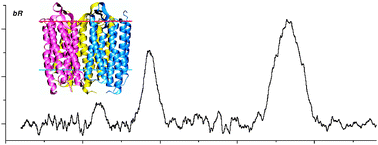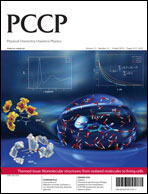Studying the stoichiometries of membrane proteins by mass spectrometry: microbial rhodopsins and a potassium ion channel
Abstract
In the present work we demonstrate the advantages of LILBID mass spectrometry in the mass analysis of membrane proteins with emphasis on ion-pumps and channels. Due to their hydrophobic nature, membrane proteins have to be solubilized by detergents. However, these molecules tend to complicate the analysis by mass spectrometry. In LILBID, detergent molecules are readily tolerated which allows for the study of solution phase quaternary structures of membrane proteins. This is shown for the proton-pump bacteriorhodospin and the potassium channel KcsA where in both cases the stoichiometries found by LILBID reflect the known structures from 2D or 3D crystals. With proteorhodopsin we demonstrate a preliminary detergent screening showing different structures in different detergents and the implications for the functionality of this protein. We show that Triton-X 100 prevents the formation of the pentamer of proteorhodopsin. Furthermore, the quaternary structures of proteorhodopsin cloned without the signal peptide and of the cation channel channelrhodopsin-2 were studied. The intrinsic properties of channelrhodopsin-2 allow for mass spectrometric analysis in very high salt concentrations up to 100 mM of NaCl. In summary we demonstrate that LILBID is an alternative mass spectrometric method for the analysis of membrane proteins from solution phase.

- This article is part of the themed collection: Biomolecular Structures

 Please wait while we load your content...
Please wait while we load your content...